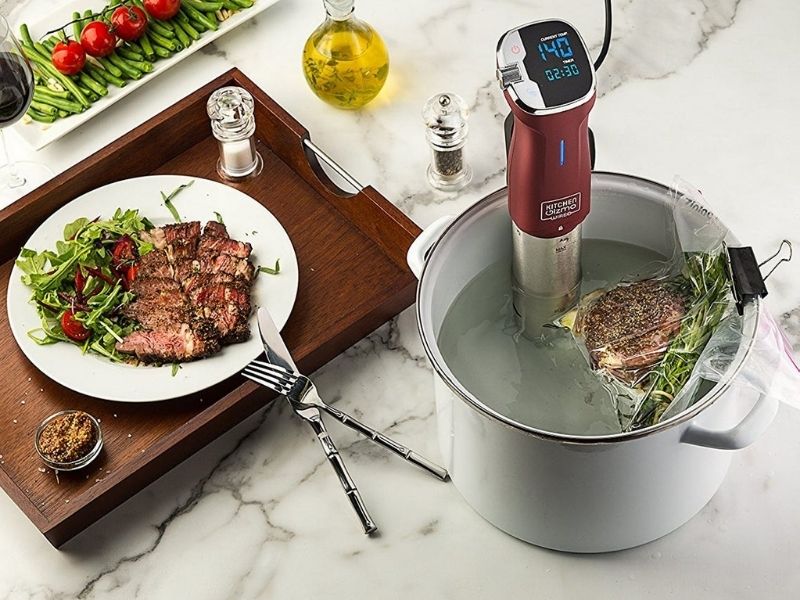A sous vide machine is one of those things you didn’t know you needed until you have it. Sous vide (pronounced sue-veed), which means “under vacuum” in French, certainly sounds more complicated and intense than it is. After all, it’s often seen at the hands of world-class chefs to create perfectly cooked proteins. But more and more people are using it as the technique is passed on to local kitchens and homes due to the availability of affordable sous vide machines.
How Does Sous Vide Cooking Work?
The hallmark of sous vide cooking is heat regulation at a consistent temperature. After marinating with sauces and herbs, the food is typically vacuum-sealed (hence the name) and dropped into a body of warm water to cook.
There’s no fire, oil, and stovetops or induction cookers involved here. The water never comes to a boil either. This means that while sous vide cooking is smoke-free, it’s a controlled and gradual process that takes much longer to finish, compared to other methods such as poaching.
The sous vide machine is an electronic stick-like apparatus with a metal coil attached to it. The coil is heated to a constant temperature, so you don’t have to worry about it fluctuating to extremely high or low temperatures in the water.
The Best Food Items To Cook In A Sous Vide Machine
Steak
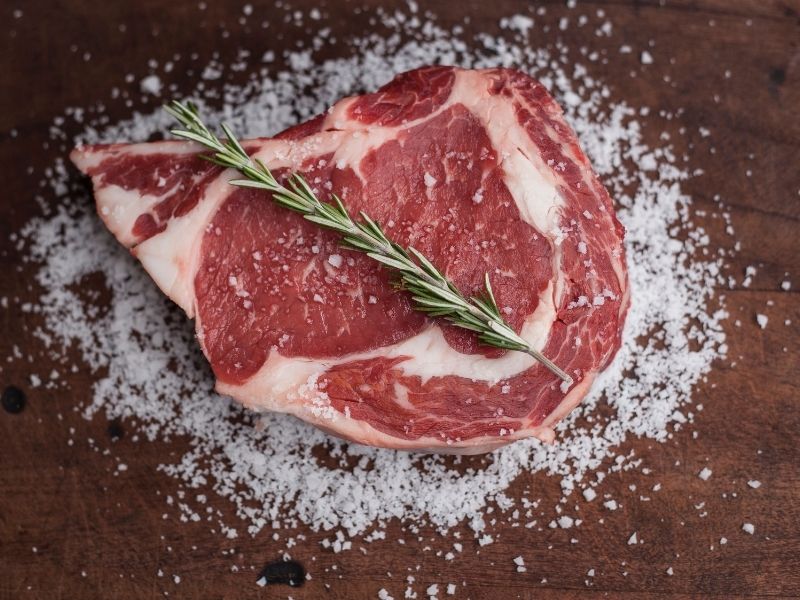
The sous vide cooking technique is most known for producing flavorful and tender steaks. By immersing a vacuum-sealed marinated steak in a temperature-controlled water bath, you are slow-cooking the steak to your desired doneness; whether that’s medium-rare, medium-well, or even rare.
It’s not only temperature regulation at work here, the sous vide machine also circulates water, ensuring that temperature is evenly distributed throughout the water bath.
When it comes to marinating the steak, it’s exactly the same as how you would cook a steak using a skillet. Butter, thyme, black pepper, salt, and garlic are all necessary to create a lip-smacking steak even if you’re sous vide cooking it.
Chicken Breast
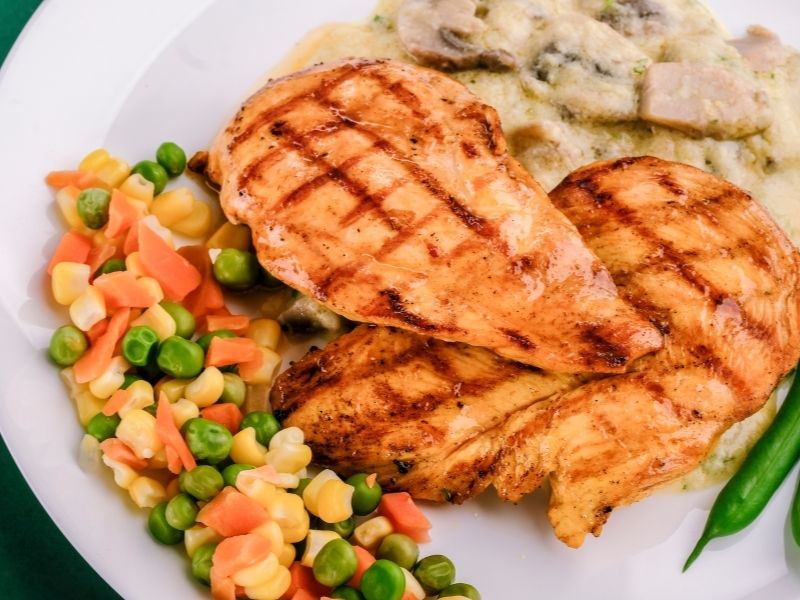
Eating overcooked chicken breast is not a pleasant experience. The meat is stringy, chewy, and so dry that you’ll need sauces to help you swallow the protein. The key to a perfect chicken breast is temperature control, the type of precise and down-to-the-degree control that only a sous vide machine can give you.
When you’re cooking chicken breast on a pan, high heat penetrates the protein from the outside in, which makes it difficult to gauge the temperature levels from the edges to the centre. As such, it’s prone to overcooking the outside just so the centre is cooked through and safe to eat.
Sous vide cooking changes all that. The vacuum-sealed chicken breast is slow-cooked so there’s no risk of charring. Meanwhile, the juices are retained in the bag for a decadent sensation in every bite.
Salmon
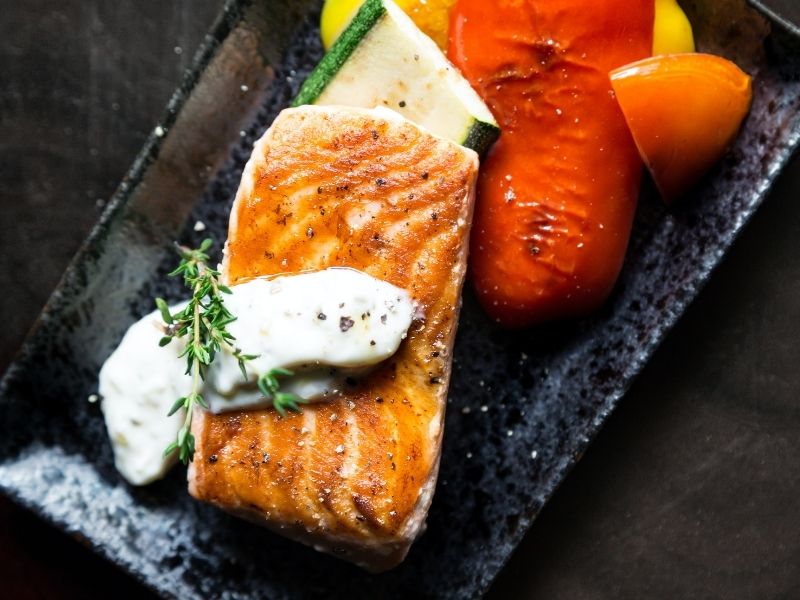
The orange-fleshed salmon fish is known for its healthy omega-3 oils and rich content of protein. However, it’s also hard to make right. Like steak, just a few seconds over is all it takes to overcook the trout. This is no longer a concern with sous vide cooking, guaranteeing moist and tender results every time.
Sous vide salmon can be served right out of the water bath. But if you prefer some crunch, heat the fish skin-side down for about one minute on a cast iron.
Eggs
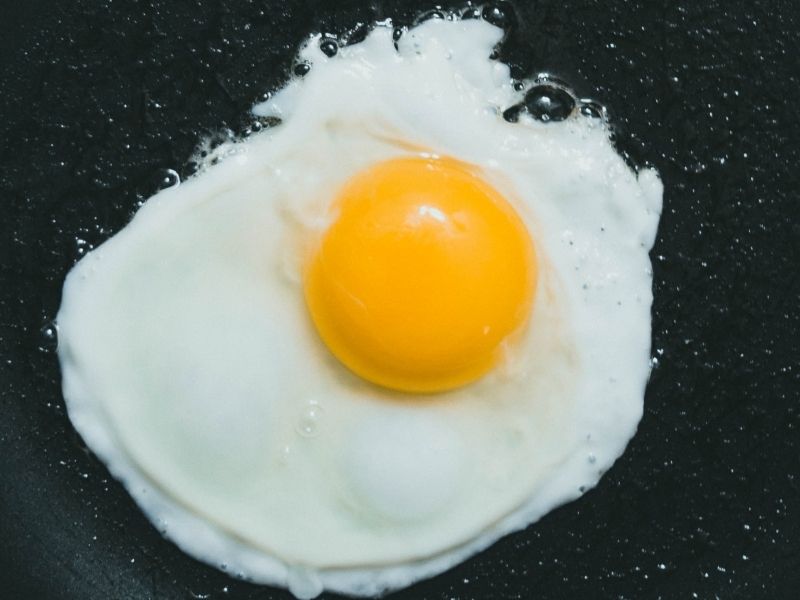
It takes longer than conventional means, but sous vide eggs are in a league of their own. The texture is incredibly rich and the yolk is perfectly runny, resembling a poached egg. Because a sous vide machine is customisable in temperature and time, you can choose to cook the eggs any way you want. Best of all, since you don’t have to monitor your eggs after putting them in the water bath, you won’t have to worry about them overcooking or undercooking.
Besides, you don’t require a vacuum bag to sous vide an egg because it cooks inside of its shell. So, essentially all you need is a sous machine, some water, and time, as well as the patience for trial-and-error.
Related: How To Make Poached Eggs: 5 Ways To Achieve Perfect Runny Yolks
Carrots
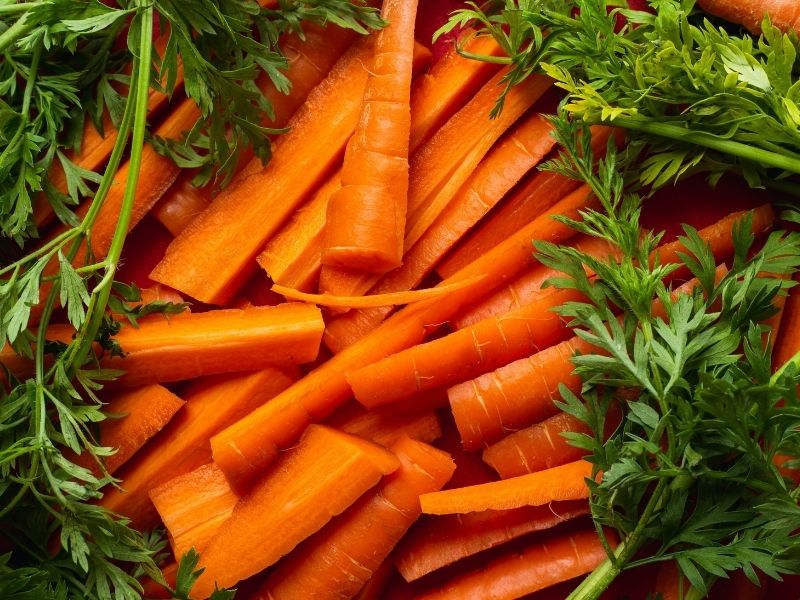
Carrots are a great side dish that can be done in different ways. Whether sautéed, roasted, or baked, they provide a burst of flavour and colour to your meals. But they’re tricky to achieve a good balance. If overcooked, carrots get mushy and if undercooked, they become dry and tough to chew.
Through sous vide, carrots are bagged and vacuum-sealed, then cooked at a precise temperature inside and out in their own juices. What you get is a succulent finish that’s moist but not mushy. Add butter or honey into the bag for a more intense flavour!
Corn
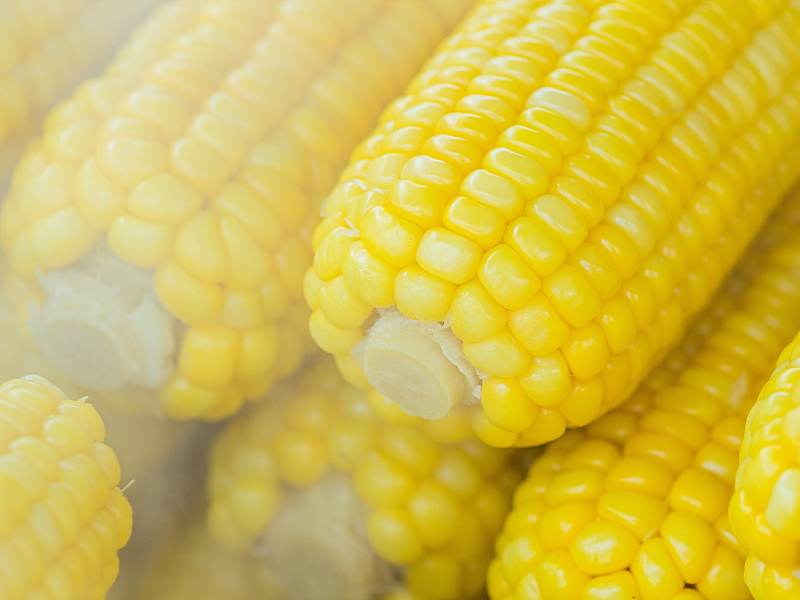
When you boil or grill corn, much of the vegetable’s essence dissipates. With sous vide, you not only retain its sweetness and moisture but also give it a more wholesome flavour. Sous vide cooking corn doesn’t take long either. Depending on the temperature level, you can get perfectly cooked corn in an hour or less.
Marination is simple. You can go with butter, pepper, and salt for a classic corn on the cob recipe. Otherwise, to spice things up, sprinkle with paprika and cilantro for a tangy and addictive aftertaste.
The Sous Vide Machine Is A Practical Kitchen Tool For Everyday Use
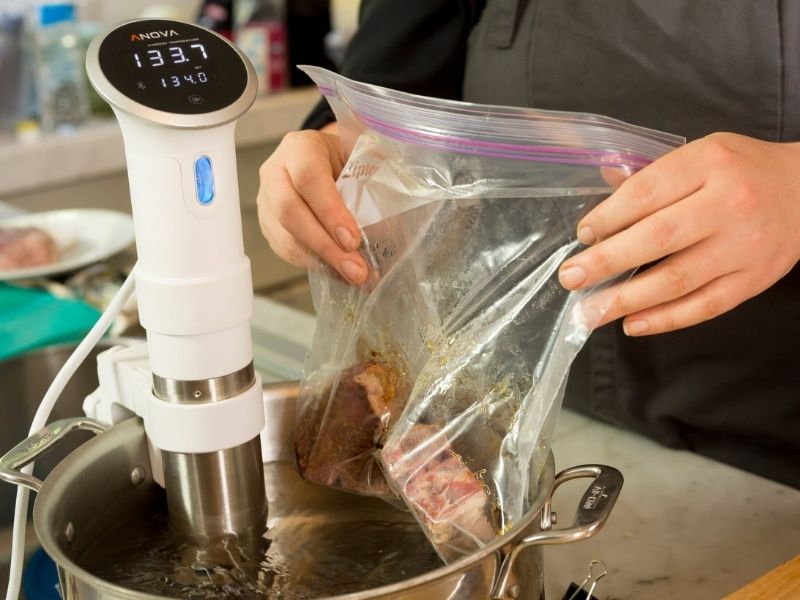
While there’s no substituting the practicality of a kitchen hood and hob, perfecting delicate proteins like steak and salmon requires lots of practice. Plus, those ingredients don’t come cheap. The sous vide machine solves this conundrum by cooking meals perfectly without constant monitoring. This means you can focus on other tasks while your dish is being cooked, helping you accomplish more in the kitchen over time. A win-win situation!
Bread makers and air fryers are two other kitchen appliances that aim to make your culinary experiences a little easier with nifty features that do more than just baking and frying. Check them out!

